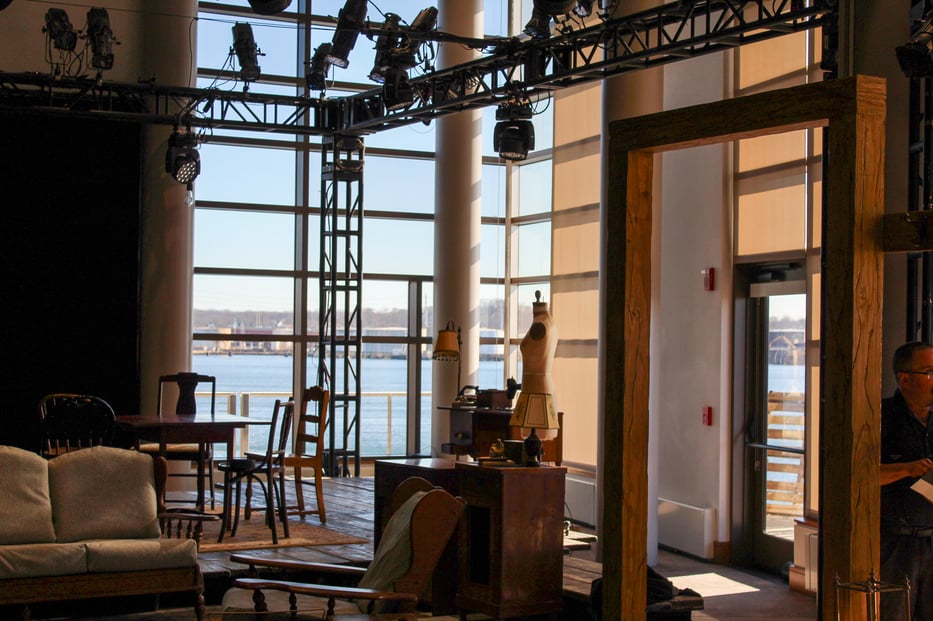 The set of Long Wharf Theater's forthcoming production of A View from the Bridge. Photos Kapp Singer.
The set of Long Wharf Theater's forthcoming production of A View from the Bridge. Photos Kapp Singer.
In a living room overlooking New Haven harbor, an old Singer sewing machine sits on a dresser. A mustard yellow carpet covers a rough-hewn wooden floor. Out the window, the Q Bridge flies over the water. Tugboats motor back and forth.
Soon, that room will be cast back to 1950s Brooklyn.
Arthur Miller’s A View from the Bridge opens Saturday, Feb. 10 at the Canal Dock Boathouse at 475 Long Wharf Drive. The show—which explores themes of forbidden desire, labor, and immigration in an Italian-American community in Brooklyn—is the third production in Long Wharf Theatre’s new itinerant model, following the closure of their permanent home at 222 Sargent Drive in early 2022.
Long Wharf’s staging of Miller’s play eschews a typical theater production’s curtained, windowless setting. Instead, the company has embraced the features of their temporary venue, using the boathouse’s waterfront location to more immersively tell the story of longshoreman Eddie Carbone, the protagonist in A View from the Bridge.
“It will feel like the docks of Red Hook, Brooklyn have been lifted up and put into our event space,” said Long Wharf Theatre’s Associate Artistic Director Rachel Alderman.
Wooden barrels, metal buckets, and fishing nets are stacked on the boathouse’s balcony. Throughout the production, performers will move between the indoors living room and the dock outdoors.
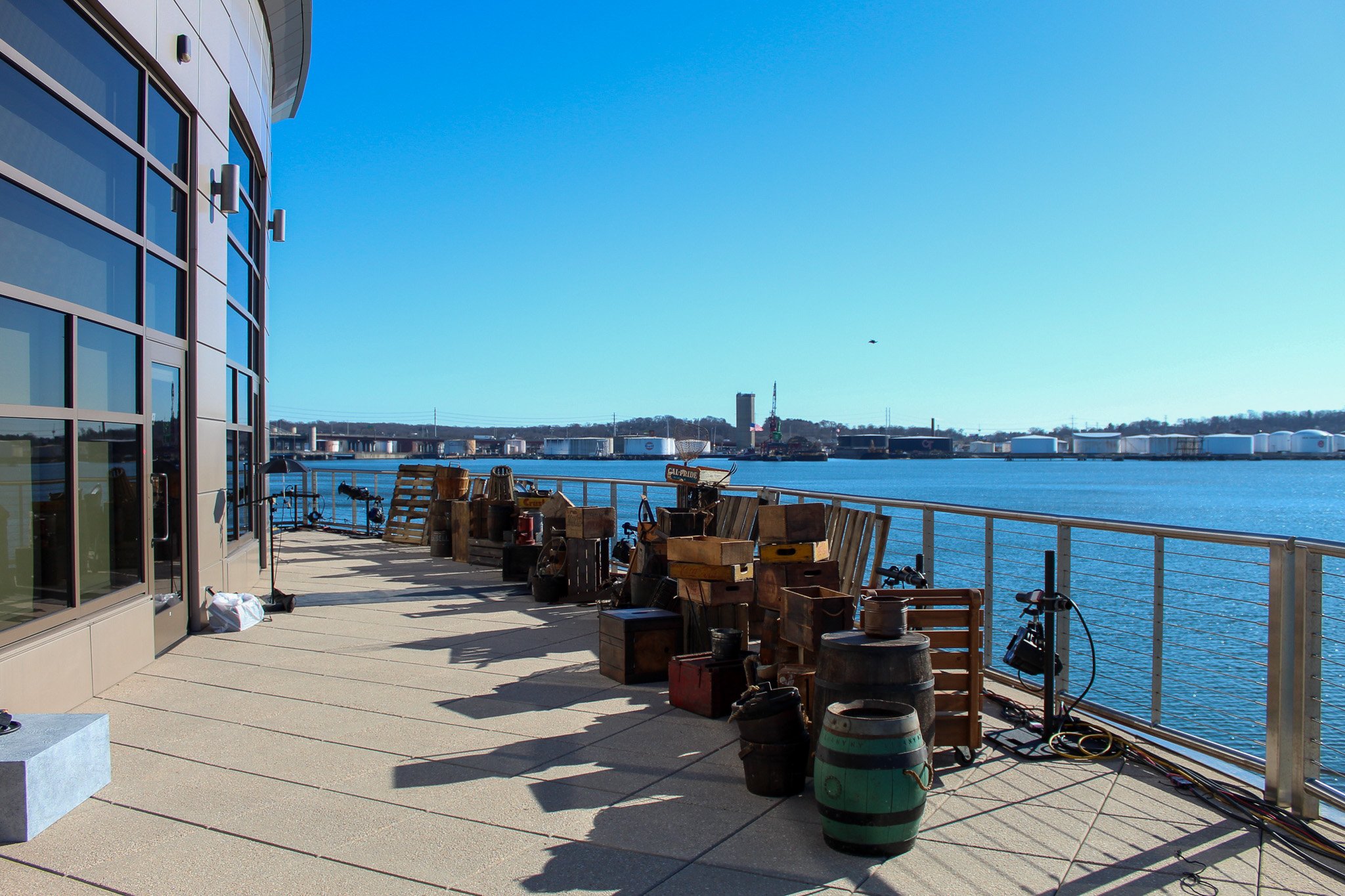
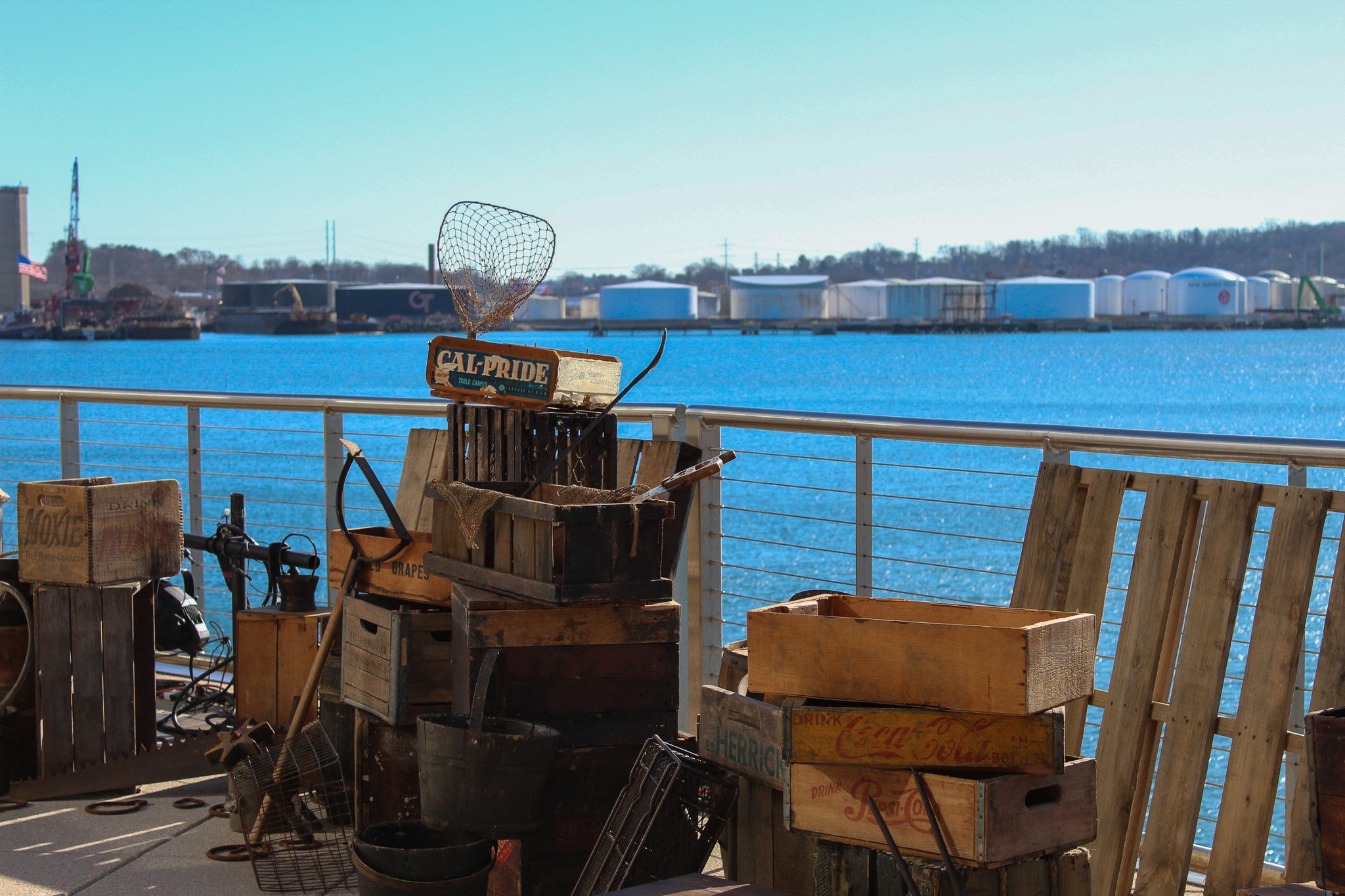 The set extends to the balcony of the Canal Dock Boathouse.
The set extends to the balcony of the Canal Dock Boathouse.
“The actors will be walking outside on that balcony and smell and hear the sounds of the harbor,” Alderman said.
“Site-specific theater always brings a lot of unique challenges and opportunities,” she added.
In the Canal Dock Boathouse, for example, large windows look out onto New Haven harbor, which will cause the light on the set to change dramatically from performance to performance— “even a 10 a.m. matinee will look different than a 2 p.m. matinee,” she said.
But Alderman welcomes these new variables. For her, they unlock new ways that both actors and audience members will experience the show.
“You’re watching them do a scene about immigration and labor, and a barge goes by on the harbor and the American flag is flying off of the barge,” Alderman said, recounting a recent rehearsal. “Suddenly, things you didn’t plan for are layered into the context of the scene in a way that makes the hair on the back of your neck stand on end.”
Elements like the weather, which a production team typically wouldn’t even consider, are at top of mind for Alderman.
“If you’re sitting there and it’s snowing outside, the experience of the longshoremen on the docks and the tension in the house is going to feel different than a bright blue sky on a crisp winter day,” she said.
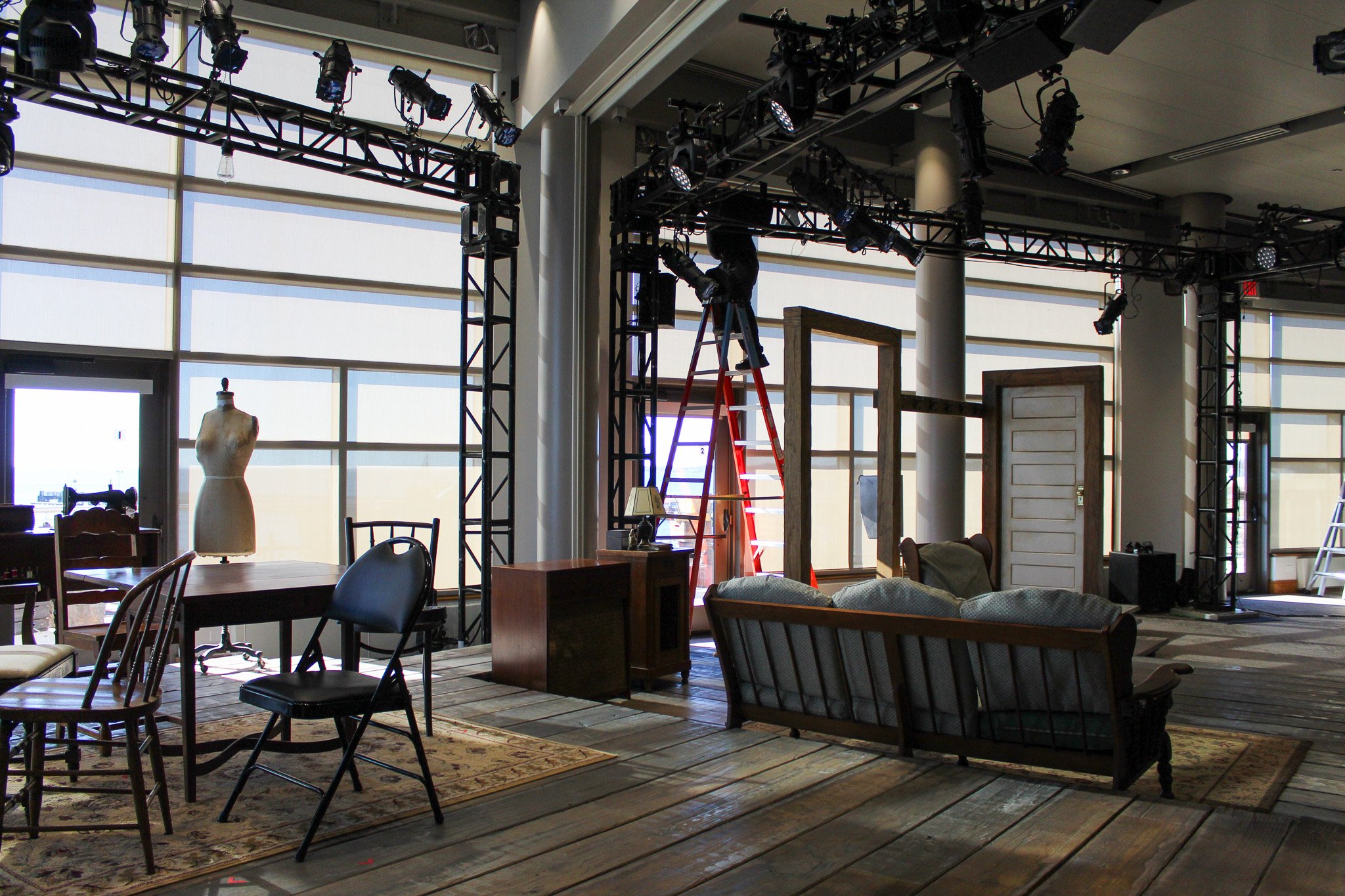
The production not only marks Long Wharf’s new stage of life, but also calls back to its storied past. In 1965, the theater opened its doors for the first time with a production of another Miller play, The Crucible, and in 1981–1982 they put on A View from the Bridge.
Alderman said the show was chosen not only because of Long Wharf’s history with Miller’s plays, but also because A View from the Bridge touches on so many aspects of Italian-American culture central to life in New Haven.
In the theater’s “Virtual Lobby,” assistant director and dramaturge Ashley Malafronte collected numerous videos, articles, and books about the Italian influence on New Haven, Connecticut, and the United States.
“We have been talking for many years about how you honor that legacy, about how you return to Miller,” Alderman said.
While Long Wharf’s loss of a permanent location was mourned, the theater’s new itinerancy has nevertheless provided the perfect opportunity to present A View From the Bridge in a fresh light.
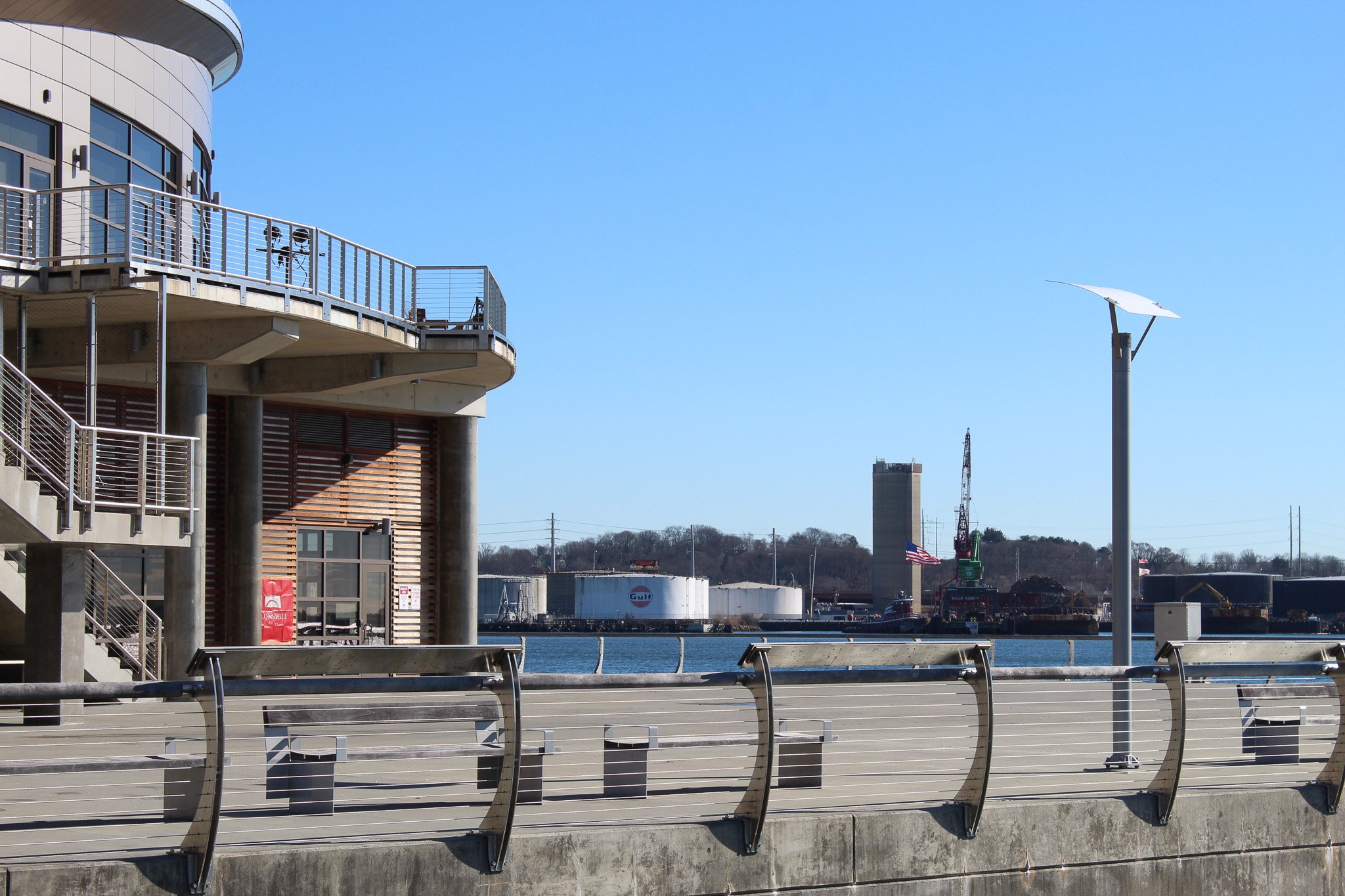 The Canal Dock Boathouse and the harbor beyond.
The Canal Dock Boathouse and the harbor beyond.
Outside the boathouse, broken seashells dropped by gulls can be seen scattered across the wind-whipped boardwalk that runs along the water. Beyond, the water shimmers, and far in the distance lie scores of white cylindrical fuel storage tanks. It’s easy to imagine dockworkers by your side.
“It really is a marriage of content and location,” Alderman said. “The actors are really looking forward to digging in.